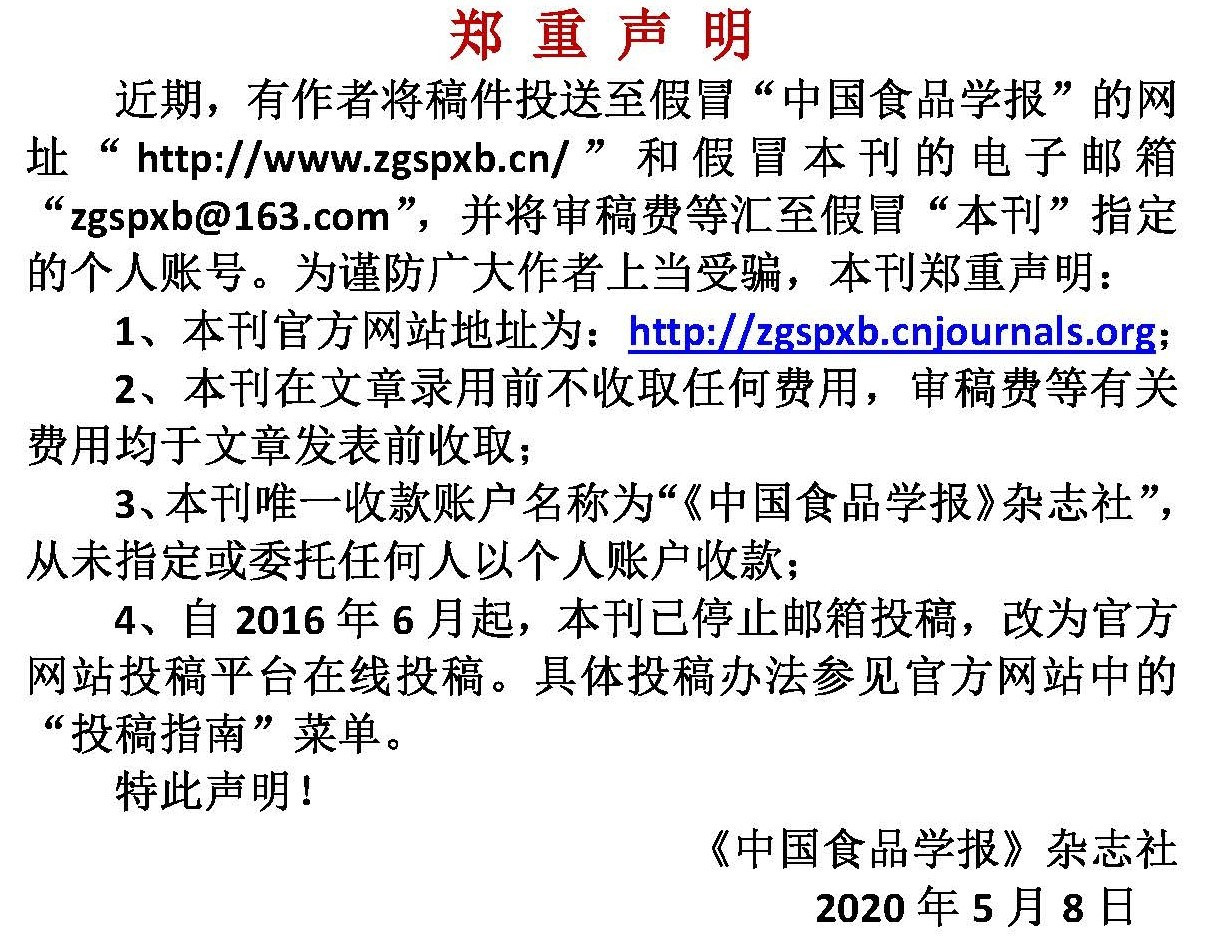干酪乳杆菌发酵及热加工方式对小麦蛋白抗原性的影响
作者:
作者单位:
作者简介:
通讯作者:
中图分类号:
基金项目:
国家自然科学基金面上项目(31872904);国家重点研发计划项目(2019YFC1605000)
Effects of Lactobacillus casei Fermentation and Thermal Processing Method on the Wheat Protein Antigenicity
Author:
Affiliation:
Fund Project:
引用本文
付文慧;刘成龙;田阳;陶莎;薛文通.干酪乳杆菌发酵及热加工方式对小麦蛋白抗原性的影响[J].中国食品学报,2021,21(5):148-155
复制分享
文章指标
- 点击次数:
- 下载次数:
- HTML阅读次数:
历史
- 收稿日期:
- 最后修改日期:
- 录用日期:
- 在线发布日期: 2021-06-07
- 出版日期:
版权所有 :《中国食品学报》杂志社 京ICP备09084417号-4
地址 :北京市海淀区阜成路北三街8号9层 邮政编码 :100048
电话 :010-65223596 65265375 电子邮箱 :chinaspxb@vip.163.com
技术支持:北京勤云科技发展有限公司
地址 :北京市海淀区阜成路北三街8号9层 邮政编码 :100048
电话 :010-65223596 65265375 电子邮箱 :chinaspxb@vip.163.com
技术支持:北京勤云科技发展有限公司
